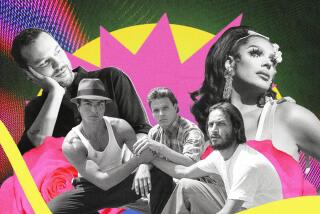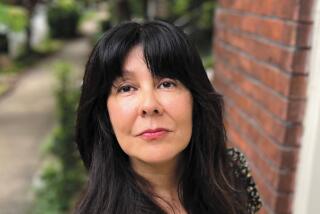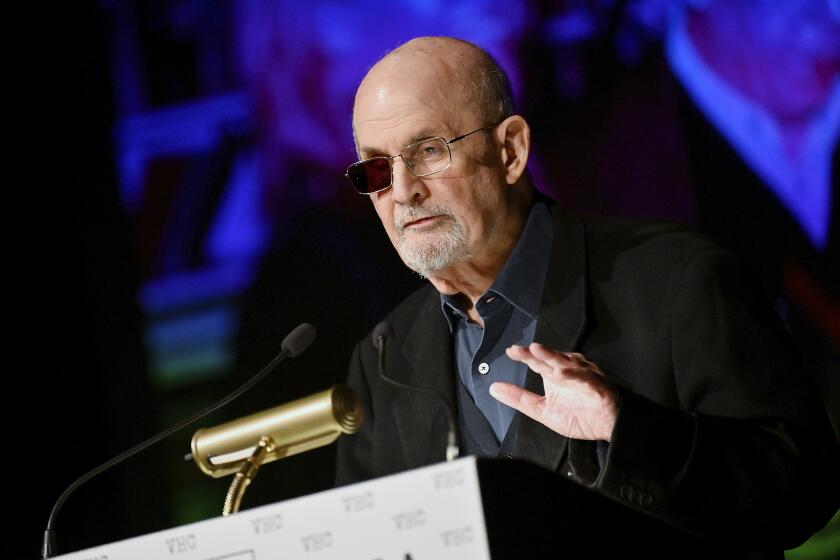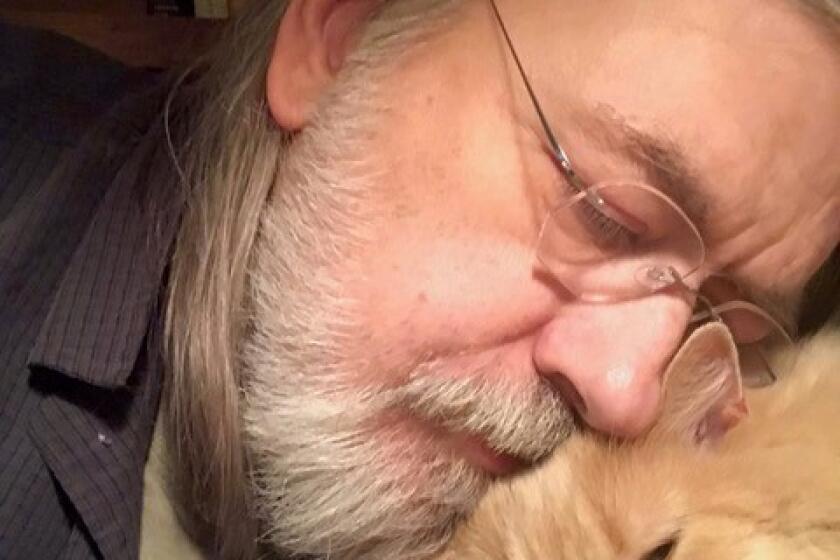Q&A: A Latina Anne of Green Gables: Andi Teran on ‘Ana of California’
Since 1908, “Anne of Green Gables” has sold more than 50 million copies and become a beloved classic. While L.M. Montgomery’s series about a strong-willed orphan has been revisited before, including as a television miniseries, it’s now gotten a creative revamping by first-time author Andi Teran. She updates the story for the modern era — with a Latina heroine.
In “Ana of California” (Penguin: $16, paper) Teran retained certain elements of the original while making the tale her own. Instead of being Canadian, Anne — now Ana — is a Mexican American in foster care in East Los Angeles.
Teran, a Mexican American from El Paso who now lives in Los Angeles, will read at Skylight Books on Saturday. She spoke to us by phone about race and culture and what it was like to modernize a classic.
What was it about “Anne of Green Gables” that inspired you to want to modernize the story?
I loved the book growing up. I reread it around the same time that I moved to Los Angeles from New York. I started thinking about what I would do if it were to be modernized and knew immediately that she was going to be Mexican American. When I met with Penguin, I turned in a couple chapters, and they really liked my take on Ana being this foster girl in foster care in Los Angeles.
It mainly came out of being inspired yet again from the original story. I couldn’t stop thinking or writing about; it just leapt onto the page.
What aspects of the classic novel were you certain you wanted to keep, and what elements did you feel needed updating?
I found it so bizarre that I had never really realized that in the original book, she’s only 11 years old. For some reason, I always thought her to be older. She ages, in the original, from 11 to 16, and I thought, well what if I start her at 16? And what if she was this girl who had been in the foster care system for much longer than Anne had been? What would that be today? What would happen to that kind of girl?
In terms of what I wanted to keep, that was tough. Writing in the shadow of L.M. Montgomery was incredibly daunting. Sitting there with all of my notes, it became apparent that I really needed to have my favorite moments — which I knew paralleled pretty much with everyone’s favorite moments — somewhere in the book. But I wanted them to be my own take on them and not have it be a play-by-play retelling of the original novel. I wanted this to stand completely on its own.
The breaking-the-slate scene is one of the biggest moments in “Anne of Green Gables” — when she breaks the slate over Gilbert Blythe’s head. That’s just something we would never do in modern times. In my version, the Gilbert Blythe character is a boy named Cole. Anne hitting Gilbert over the head, that for me in my book was Ana hitting Cole over the head with her intellect.
While researching the book, you visited farms in order to find a location for your main character to live. What was that process like?
I went on a road trip trying to pinpoint exactly where Ana was going to go. I went all the way north up into the San Francisco area, then further north, about five or six hours north, into an area called the Lost Coast. It’s this really beautiful, desolate coastline that you can’t drive through; you have to actually get off the highway and go to it.
I was blown away. I was blown away by these beautifully preserved Victorian mansions and houses. We drove to the ocean, and there was no one there for as far as we could see. It was this absolutely jaw-dropping coastline with cliffs and beaches. That location made it into the book.
We went further north and did a hike in a place called Fern canyon. We couldn’t believe that when you looked up, almost as high as a tall building, there were cliffs full of ferns. We felt so happily lost in this forest area that I wanted there to be a moment and a place in my book where Ana has to get lost, in order to find where she needs to be.
I knew immediately that I wanted to take all those locations and make them into one. Which is how I came up with the fictional town of Hadley.
With the campaign We Need Diverse Books, there’s been a lot of discussion about having more characters of different ethnicities and cultures in books. Do you think that applies to Mexican American culture — is it underrepresented in literature?
I would say yes only because I don’t see it that often. I think it’s becoming a lot better in film and television, but I think we still aren’t seeing Mexican American culture represented across all artistic mediums. It’s why it’s really exciting this year that Juan Felipe Herrera is named our U.S. poet laureate. That’s the first that we’ve seen someone who is a Latino or a Latina in that position. ...
In terms of literature, I certainly didn’t read a lot of books growing up that had young, female heroines who were from my same background. I grew up on the border of Texas and Mexico in El Paso, Texas. I’m half-Mexican and half-American. My mom’s family is from California, and my dad’s family is from Mexico. We all sat around talking about how it was so rare for us to see us reflected in modern culture, certainly books.
Why do you think that is?
It’s such a shame because it’s one of the biggest growing populations in this country right now. It’s amazing what’s going on with Donald Trump and the uproar that is surrounding this. This is America! All different backgrounds are represented. It seems like more and more, people are starting to raise their voices and say, “Hey, this is who I am and where I come from, and I have every right to celebrate my culture.”
That’s something that I’m really trying to do as a writer: bring attention to how I grew up so that other young women growing up can feel like they see themselves in something that they’re reading.
As a Mexican American writer, have you ever felt like there were roadblocks or obstacles you hit that you may not have hit if you were not Mexican American?
No, I have to say, I kind of found the opposite. To me, my race and heritage have always been an amazing asset because it makes me really want to push to try and write and get things published that might not have been able to do so.
I used to write for Vanity Fair when I lived in New York. I had an opportunity with my editor to pitch something that I wanted to do — it was to cover the entertainment scene on the border. I was able to write this article and talk about my background and talk about where I come from and shed light on what’s going on with music on the border of Texas and Mexico.
What came out of it was attention and a music festival. Now there’s a music festival in El Paso that was started by this article that I wrote, which I find crazy! This is the third year that they’ve done it; it’s called the Neon Desert Music Festival.
Again, I’m only half-Mexican. There’s something about that too that is interesting to explore because so many people in our country today are from mixed races; we’re not really one or the other. But I don’t think anyone necessarily needs to choose. Because we’re all Americans.
MORE FROM BOOKS:
Get ready to be obsessed by these 29 page-turners
27 nonfiction books you’ll want to read -- and share -- this summer
Listen up: Here are 11 audiobooks you’ll want to ‘read’ this summer
More to Read
Sign up for our Book Club newsletter
Get the latest news, events and more from the Los Angeles Times Book Club, and help us get L.A. reading and talking.
You may occasionally receive promotional content from the Los Angeles Times.






